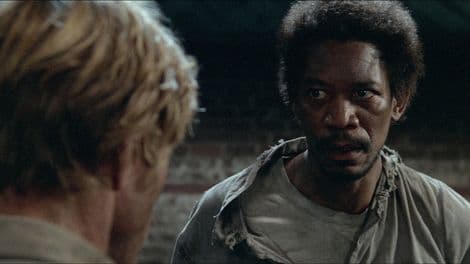Dive Deep into the Prickly World of "Cactus Flower": More Than Just a Desert Bloom
Have you ever seen a movie title that makes you scratch your head? "Cactus Flower" is one of those titles. It sounds like a botany documentary, but it is more than that. It is a classic rom-com, a charming look at the sixties with a stellar cast. Let's peel back the layers and dive in. 1. Unpacking the Plot of "Cactus Flower": It's Not About Actual Cacti (Mostly)
So, what's the fuss about "Cactus Flower"? This 1969 film is a romantic comedy about Julian Winston. Played by Walter Matthau, Julian is a suave bachelor and dentist. He creates an elaborate story to avoid commitment. His young girlfriend, Toni Simmons, played by Goldie Hawn, thinks he is married with kids. Classic avoidance, right? When Toni learns the truth, she attempts suicide (played for laughs). Feeling guilty, Julian decides to come clean. But why be honest when you can keep the game going? Instead of confessing, Julian invents a fictional wife to convince Toni he can't commit. Enter Stephanie Dickinson, Julian's organized nurse, played by Ingrid Bergman. At first, Stephanie refuses to help. But she soon agrees to pretend to be Julian's soon-to-be ex-wife and acts distant and cold. As she plays this role, something unexpected happens. She sheds her prickly persona and reveals a warm, lovely side. Julian starts to see her in a new light. The film becomes a delightful mix of deception and self-discovery. Fake identities spark real feelings. It's a story about finding love in unexpected places, like right in your dental office. Who knew dental visits could lead to romance? 2. Meet the Blooming Cast and Crew: The Faces Behind the "Cactus Flower" Magic
"Cactus Flower" is not just about its plot; it shines due to its remarkable cast. Here are the main players. * Goldie Hawn: The Budding Starlet
Goldie Hawn shines as Toni Simmons. In 1969, Goldie was only 24 years old. Incredible! She radiated youthful charm and won an Academy Award for Best Supporting Actress. Born in D.C., she brought that all-American vibe. Before Hollywood, Goldie danced professionally at 19. Imagine such a quick rise! In the romance department, her life twists and turns too. Goldie was married to Bill Hudson from 1976 to 1980, resulting in two talented kids: Kate and Oliver Hudson. Since 1983, she has been with Kurt Russell. They are like Hollywood royalty who do not follow tradition. They never married; Kurt believes it changes nothing. Together, they have a son, Wyatt Russell, also an actor. Quite the artistic family! * Walter Matthau: The Seasoned Charmer
Walter Matthau plays Dr. Julian Winston, bringing his classic charm to the role. Matthau was in his late forties during filming. He had an established career and portrayed a world-weary yet lovable character. His chemistry with Jack Lemmon became legendary. They were more than co-stars; they were best friends, creating iconic pairings like in "The Odd Couple." Their bond was captivating both on-screen and off-screen. What fun behind-the-scenes moments they must have shared! * Ingrid Bergman: The Elegant Bloom
Ingrid Bergman is Stephanie Dickinson, exemplifying grace and poise. At 54 during filming, this marked her return to Hollywood after a hiatus. Her foray into comedy was a success! She added elegance to her character's transformation from strict to romantic. While Bergman had accolades, her life had challenges, including a breast cancer diagnosis in 1974. Despite health issues, she continued working and displaying resilience until her death in 1982 at age 67. Bergman's life echoed her films with dramatic twists; she faced three marriages and lasting connections. At the end of her life, Lars Schmidt was by her side despite their divorce years before. She left behind over 50 films, including "Casablanca." A true legacy! 3. The Grand Finale: How "Cactus Flower" Wraps Up Its Prickly Tale
How does this romantic tale conclude? After mistaken identities and lots of deception, the end of "Cactus Flower" delivers satisfaction like finding water in a desert. Julian realizes he loves Stephanie, his nurse who pretended to be his fictional ex-wife. In a moment of honesty, Julian tells Stephanie he ended things with Toni. At first, he worried but recognized the relief instead. Ouch for Toni, but honesty blooms now! Overjoyed, Stephanie feels the same love back after thawing out her feelings for Julian. There’s an embrace, heartfelt confessions, and finally...a kiss. The film ends with Julian and Stephanie together. This shows that love can blossom where you least expect it. Toni? She is young and free, ready to find someone new and honest. Everyone obtains a happy ending in a delightfully sixties way! 4. Decoding the Symbolism: More Than Meets the Eye with the "Cactus Flower"
Now, let’s get to the heart of the matter: the cactus flower. Why "Cactus Flower"? It is more than a catchy title. It holds deep symbolism. Cactus flowers are strong symbols. They resonate with the movie's themes. *Endurance: Think about it: cacti thrive in harsh, dry conditions. They survive well. A cactus flower represents endurance and strength. Stephanie Dickinson, like a cactus, survived a life of being efficient and organized. She is a bit emotionally closed off. Her ability to "bloom" and open to love reflects the cactus flower’s resilience. * Protection: Cacti possess prickly spines. This shows nature says "back off!" They symbolize a shield from danger. Stephanie’s demeanor is guarded. She appears prickly herself. She guards her emotions, just as a cactus protects itself physically. * Love: Cactus flowers also signify love. This includes unconditional love, similar to a mother’s care. It may seem odd given their prickly look, but even something hard can produce beauty. Stephanie's eventual embrace of love reflects this symbolism well. * Passion: In Japan, sending a cactus flower shows passion. The vibrant bloom from a harsh plant signifies intense feelings. While the romance between Julian and Stephanie is not fiery, it signifies deep and steady passion. * Lust and Chastity: This part is culturally nuanced. In Eastern cultures, cacti can signify lust, possibly due to their shape. Yet, in the West, they symbolize chastity because of their spikes. Stephanie's reserved nature aligns with this Western view. Yet, her underlying attraction hints at hidden "lust." * Resurrection, Renewal, Purity, and Grace: Various cactus flowers have unique meanings. The Easter Lily Cactus signifies resurrection and purity, linked to rebirth. The Christmas Cactus shows renewal, blooming in colder months. The Bishop's Cap Cactus symbolizes purity and grace, adding another layer to the symbolism. * Warmth and Survival: In Native American culture, cacti symbolize survival in tough environments. They represent resilience against adversity. This connects back to themes of strength and endurance, enriching the "cactus flower" symbolism. Therefore, "Cactus Flower" is not random. It is a metaphor in the movie's fabric. Stephanie starts as a "cactus." She is emotionally guarded and unyielding. She blooms into a "flower" when she opens to love. The title captures her transformation and beauty from unexpected places. It shows the resilient nature of love. Plus, it sounds catchy, doesn't it? Next time you see a cactus, remember there is more than meets the prickly eye.












Responses (0 )